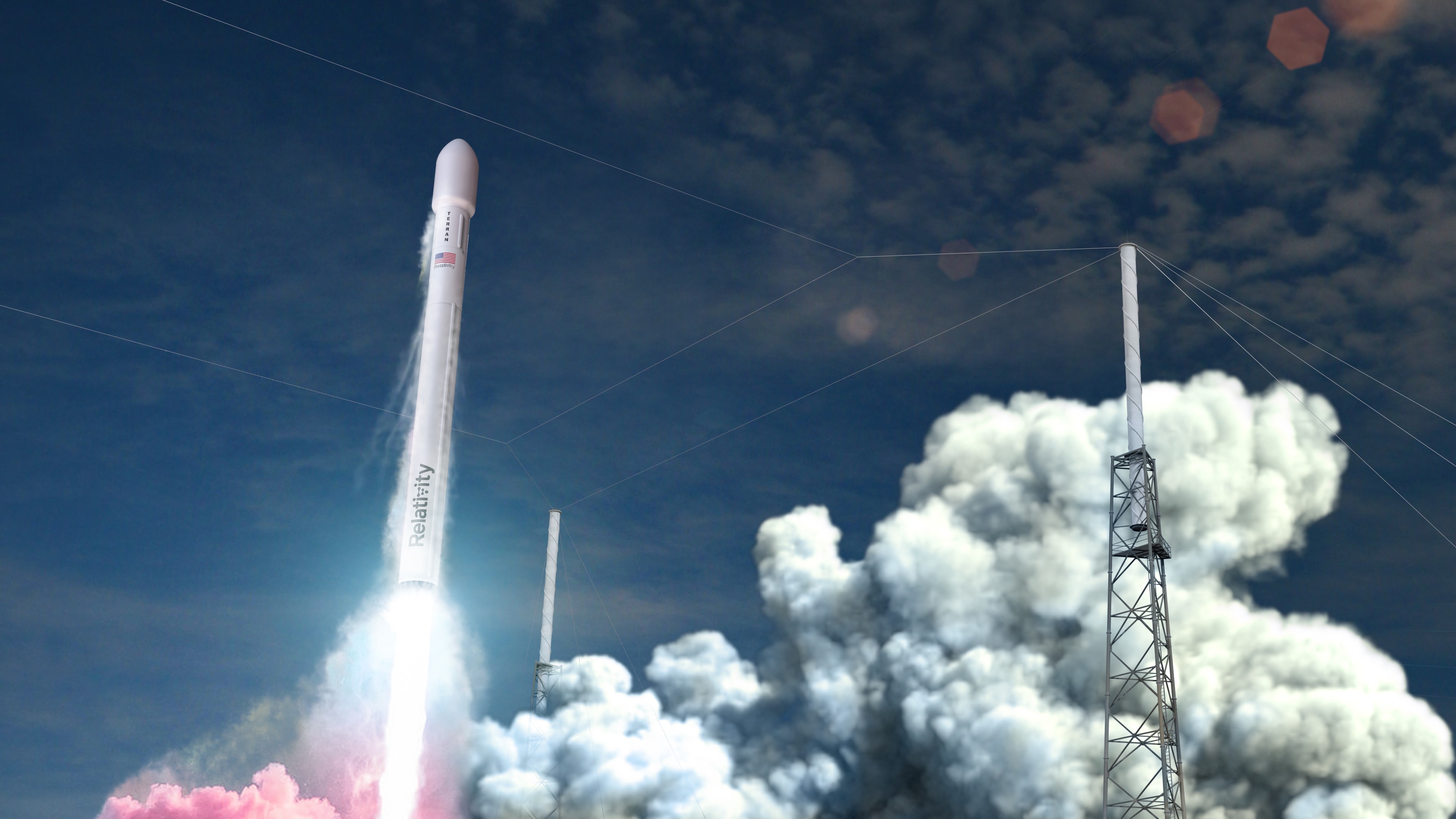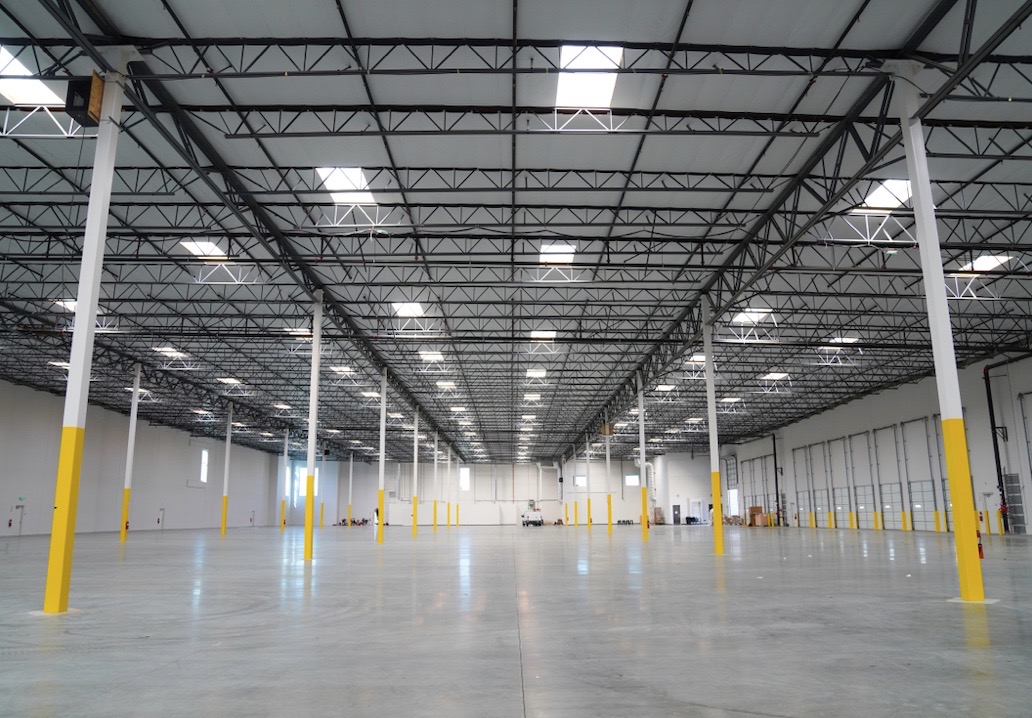Relativity Space will 3D-print rockets at new autonomous factory in Long Beach, California

Next-generation rocket builder Relativity Space is moving to a new home.
Relativity Space, which aims to revolutionize spaceflight with its 3D-printed rockets, will soon be based out of a 120,000-square-foot (11,150 square meters) space in Long Beach, California, company representatives announced Friday (Feb. 28).
The new facility, which is close to Relativity Space's old Los Angeles headquarters, will house business operations and the autonomous factory that will churn out the company's Terran 1 rocket. That vehicle is scheduled to fly for the first time next year.
Video: Meet Relativity Space, home of 3D-printed rockets
Related: 3D-printed rocket engine launches new era of space exploration
"Relativity is disrupting nearly 60 years of prior aerospace technology by building a new manufacturing platform using robotics, 3D printing and AI," Relativity Space CEO and co-founder Tim Ellis said in a statement.
"With no fixed tooling, Relativity has enabled a massive part count and risk reduction, increased iteration speed, and created an entirely new value chain," Ellis added. "I’m confident our autonomous factory will become the future technology stack for the entire aerospace industry."
Breaking space news, the latest updates on rocket launches, skywatching events and more!
Ellis once worked at Blue Origin, Jeff Bezos' spaceflight company. Fellow Relativity Space co-founder Jordan Noone is a former SpaceX employee. The duo formed Relativity Space in 2015 and brought it out of stealth mode a few years later.
The company aims to vastly increase access to space via 3D printing and intelligent automation. This approach leads to rockets that are much less complex, much more reliable and much faster to build than their traditional counterparts, Relativity Space representatives have said.
For example, the 95-foot-tall (29 m) Terran 1 has just 1% as many parts as "normal" rockets do, according to a description on the Relativity Space website. The two-stage rocket, which will be able to launch a maximum of 2,750 lbs. (1,250 kilograms) to low-Earth orbit on each $10 million mission, can be built from scratch in less than 60 days.
Terran 1's payload capacity, by the way, puts the vehicle in a niche between smallsat launchers such as Rocket Lab's Electron booster and bigger rockets like SpaceX's Falcon 9.
The new headquarters adds to Relativity Space's growing footprint around the country. The company already leases a 220,000-square-foot (20,440 square m) factory building at NASA's Stennis Space Center in Mississippi, for example. Relativity Space also has an agreement to use two test facilities at Stennis, and the company has secured the right to launch Terran 1 rockets from Launch Complex-16 at Cape Canaveral Air Force Station in Florida.
Relativity Space's vision extends far beyond the United States' borders, however — far beyond Earth orbit, in fact. The company wants to eventually help humanity colonize Mars.
"We believe in a more inspired future with people thriving on Earth and on Mars," the Relativity Space website reads. "In the early days of settlement, intelligent automation and lightweight, compact 3D printing are fundamental technologies needed to quickly establish a new society with scarce resources."
The design of the company's Aeon rocket engines can accommodate that Red Planet vision. The engines burn liquid oxygen and liquid methane, both of which could be produced on Mars, as SpaceX founder and CEO Elon Musk has stressed. (SpaceX's new Raptor engine, which will power the company's Starship and Super Heavy Mars-colonizing transport system, also burn oxygen and methane.)
Though Relativity Space does not yet have any launches under its belt, investors have expressed considerable confidence in the company. Relativity Space snared $140 million in a funding round last fall, bringing the company's total investment haul to $185 million.
And customers are already starting to line up to ride Terran 1 to space. For example, Relativity Space recently announced contracts to launch payloads for Momentus, Telesat, Spaceflight and Thailand-based startup mu Space.
- Relativity Space to launch Thai satellite on 3D-printed rocket
- 3D printing: 10 ways it could transform space travel
- Relativity Space to launch satellite 'tugs' on 3D-printed rocket
Mike Wall is the author of "Out There" (Grand Central Publishing, 2018; illustrated by Karl Tate), a book about the search for alien life. Follow him on Twitter @michaeldwall. Follow us on Twitter @Spacedotcom or Facebook.
OFFER: Save at least 56% with our latest magazine deal!
All About Space magazine takes you on an awe-inspiring journey through our solar system and beyond, from the amazing technology and spacecraft that enables humanity to venture into orbit, to the complexities of space science.

Michael Wall is a Senior Space Writer with Space.com and joined the team in 2010. He primarily covers exoplanets, spaceflight and military space, but has been known to dabble in the space art beat. His book about the search for alien life, "Out There," was published on Nov. 13, 2018. Before becoming a science writer, Michael worked as a herpetologist and wildlife biologist. He has a Ph.D. in evolutionary biology from the University of Sydney, Australia, a bachelor's degree from the University of Arizona, and a graduate certificate in science writing from the University of California, Santa Cruz. To find out what his latest project is, you can follow Michael on Twitter.


